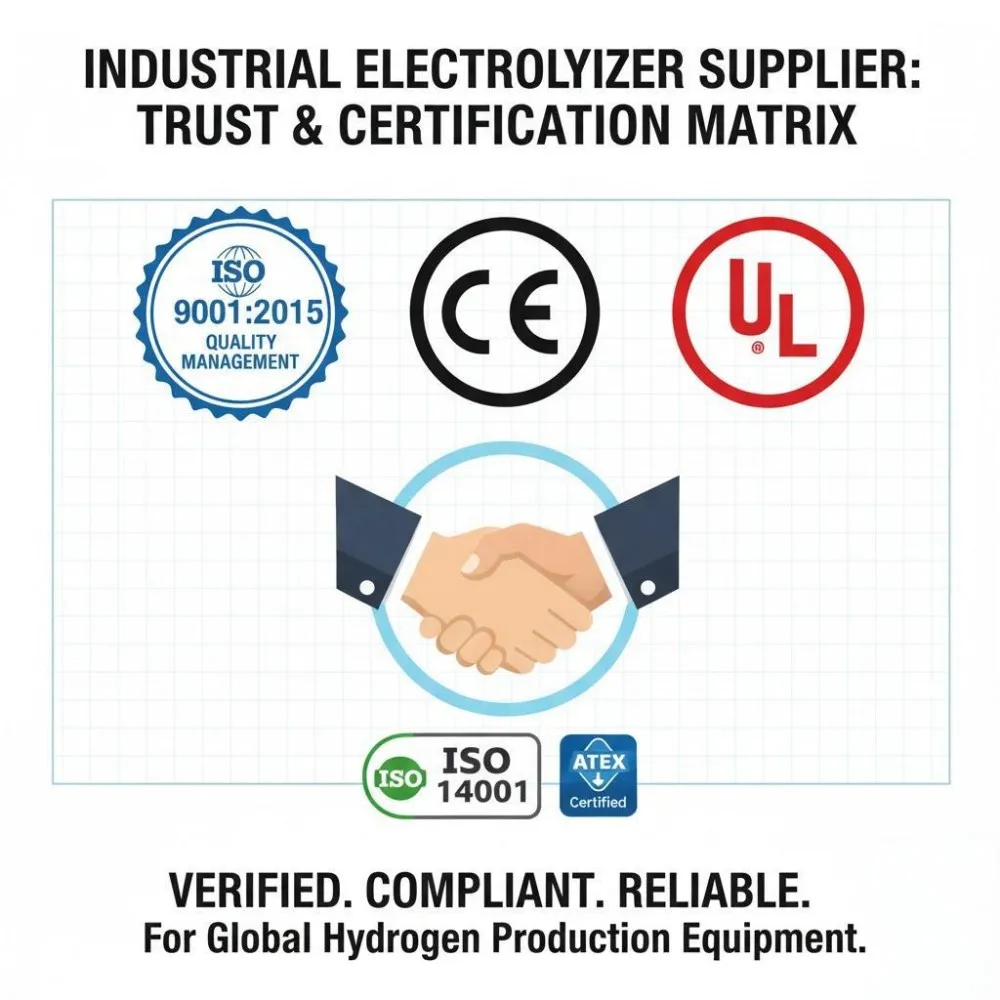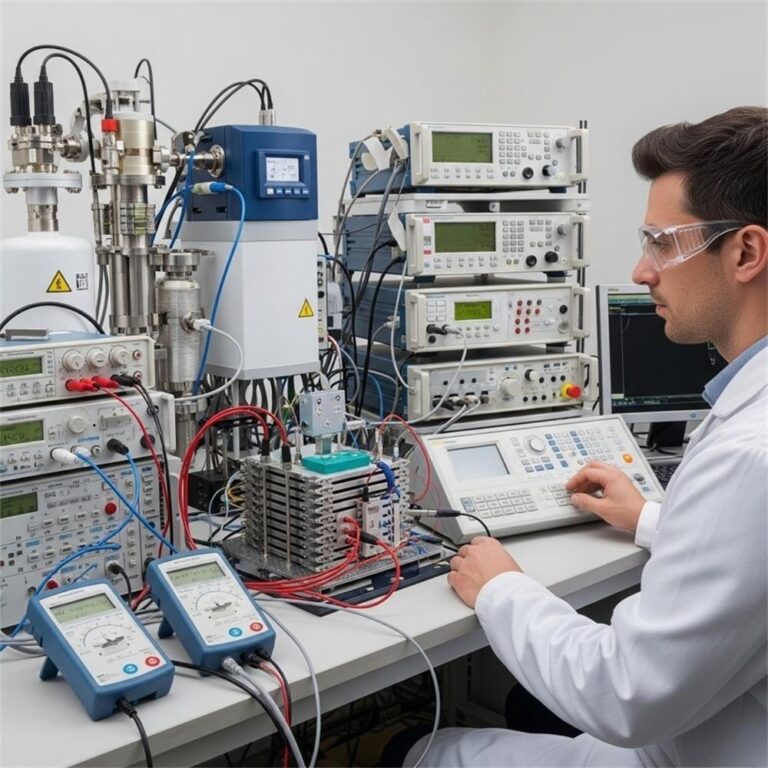Discover the latest advancements in water electrolysis hydrogen generators. Explore efficiency improvements, industrial applications, and the future of hydrogen energy. Contact [Your Company Name] for solutions.
Introduction
As the world transitions towards cleaner energy sources, hydrogen has emerged as a frontrunner in the quest for sustainability. Known for its zero-emission profile when used as a fuel, hydrogen offers a compelling solution for decarbonizing multiple sectors—from transportation to heavy industry. At the heart of this hydrogen revolution lies the hydrogen generator, particularly those powered by the electrolysis of water.
Water electrolysis represents a promising, scalable method to produce green hydrogen. This process splits water (H₂O) into its elemental components—hydrogen (H₂) and oxygen (O₂)—using electricity. When powered by renewable sources like solar or wind, it becomes a completely clean cycle, offering carbon-free energy storage and fuel options.
In this blog, we dive deep into how water electrolysis hydrogen generators are evolving. We’ll explore their technological advancements, increased efficiency, diverse applications, and their critical role in shaping a greener, decentralized, and resilient energy future.

Section 1: Understanding Water Electrolysis Hydrogen Generators
1.1 What is Water Electrolysis?
At its core, water electrolysis involves passing an electric current through water to separate it into hydrogen and oxygen gases. The overall chemical reaction can be simplified as:
$2H₂O(l) → 2H₂(g) + O₂(g)$
This process takes place in a device called an electrolyzer, which typically consists of:
- Electrodes (anode and cathode): where oxidation and reduction occur.
- Electrolyte: medium that facilitates ion movement.
- Power supply: delivers direct current (DC) electricity.
The hydrogen produced is captured, stored, and used as a clean energy carrier for various applications, from fuel cells to industrial processes.
1.2 Types of Electrolysis Technologies
1.2.1 Alkaline Electrolysis
One of the oldest and most commercially available methods, alkaline electrolysis uses a liquid alkaline solution (usually KOH or NaOH) as the electrolyte.
Pros:
- Proven, mature technology.
- Lower capital cost.
Cons:
- Lower current density.
- Slower ramp-up time; less suitable for dynamic renewable integration.
1.2.2 Proton Exchange Membrane (PEM) Electrolysis
PEM electrolyzers use a solid polymer membrane as the electrolyte, offering compact and efficient design.
Pros:
- High current densities.
- Rapid response times.
- High purity hydrogen output.
Cons:
- Expensive catalysts (e.g., platinum).
- Membrane degradation over time.
1.2.3 Anion Exchange Membrane (AEM) Electrolysis
A newer entrant, AEM electrolysis combines the benefits of alkaline and PEM systems.
Pros:
- Potential for using inexpensive catalysts.
- Improved efficiency.
- Lower material costs.
Cons:
- Technology still under development.
- Durability and scalability challenges.
1.2.4 Solid Oxide Electrolysis Cells (SOEC)
SOEC systems operate at high temperatures (700–1000°C), using ceramic membranes to split water vapor.
Pros:
- Exceptional efficiency.
- Can use waste heat from industrial processes.
Cons:
- Material degradation due to high temps.
- Longer start-up times.
Section 2: Latest Advancements in Electrolysis Technology
2.1 Materials Science Innovations
Breakthroughs in materials science have significantly improved electrolyzer performance. Some key developments include:
- Advanced Electrocatalysts: New materials like nickel-iron alloys and non-precious metal catalysts reduce cost and enhance reaction rates.
- Membrane Technology: Durable, high-conductivity membranes offer longer life cycles and better ionic efficiency.
- Nanomaterials: Nanostructured electrodes increase surface area, improving reaction kinetics and lowering energy requirements.
2.2 System Design Improvements
Modern electrolyzers are more compact, modular, and energy-efficient than their predecessors. Innovations include:
- Stack Design Enhancements: Multi-cell configurations boost hydrogen output without increasing footprint.
- Thermal Management: Smart cooling systems prevent overheating and improve overall system longevity.
- Renewable Integration: Many systems now operate directly with solar or wind input, facilitating off-grid hydrogen production.
2.3 Integration with Renewable Energy Sources
Hydrogen generation via water electrolysis becomes truly green when powered by renewable energy.
- Solar & Wind Power: Renewable-powered electrolysis enables emission-free hydrogen.
- Intermittent Supply Management: Battery storage and smart grid solutions help buffer supply fluctuations.
- Case Study: Germany’s REFHYNE project, a large-scale PEM electrolyzer, demonstrates viable hydrogen production integrated with renewable energy.
Section 3: Efficiency Improvements in Hydrogen Generators
3.1 Reducing Energy Consumption
Energy efficiency is pivotal in making hydrogen cost-competitive.
- Minimizing Losses: Advances in electrode coatings reduce voltage requirements.
- Control Systems: AI-driven performance optimizations adjust input power dynamically.
- Waste Heat Recovery: Capturing heat for secondary use enhances system efficiency.
3.2 Increasing Hydrogen Production Rate
Manufacturers are developing systems that deliver higher hydrogen outputs per unit of input energy.
- Higher Current Densities: Improvements in membrane and catalyst materials make this possible.
- 3D Electrode Architectures: Increase active surface area and improve gas separation.
3.3 Case Studies: Efficiency Gains in Real-World Applications
- ITM Power (UK): Achieved 82% system efficiency using PEM technology.
- Nel Hydrogen (Norway): Showcased reductions in electricity use per kg of hydrogen by 15% over the past five years.
Certainly! Let’s continue the article seamlessly from where we left off:
Section 4: Applications Across Industries
4.1 Industrial Sector
Industries are increasingly turning to hydrogen generators to decarbonize critical processes:
- Ammonia Production: Hydrogen is a primary input for ammonia synthesis, essential for fertilizers. Electrolytic hydrogen can replace natural gas-derived hydrogen, cutting CO₂ emissions significantly.
- Methanol Production: Methanol, widely used in chemical synthesis and fuel, also relies on hydrogen. Green hydrogen makes the process cleaner.
- Steel Manufacturing: Hydrogen is being tested as a direct reduction agent for iron ore, replacing coal. Projects like HYBRIT in Sweden are pioneering fossil-free steel.
4.2 Energy Sector
Hydrogen is now recognized as a key pillar of the future energy system:
- Fuel Cells for Vehicles: PEM fuel cells convert hydrogen to electricity, emitting only water vapor. Heavy-duty transport like buses and trucks benefit most.
- Grid-Scale Energy Storage: Surplus renewable energy can produce hydrogen via electrolysis, stored and converted back during peak demand.
- Synthetic Fuels Production: Hydrogen serves as a feedstock for creating synthetic hydrocarbons, enabling clean aviation and shipping fuels.
4.3 Transportation Sector
Hydrogen offers a compelling alternative in sectors where battery electrification is limited:
- Hydrogen Fuel Cell Vehicles (FCVs): Offer fast refueling and long range, ideal for public transport and logistics fleets.
- Refueling Infrastructure: Expanding hydrogen stations in Europe, Japan, and California support FCV adoption.
- Aviation & Maritime: Research is underway into hydrogen-powered aircraft and ships. Airbus, for example, plans hydrogen planes by 2035.
Section 5: Future Trends in Water Electrolysis Hydrogen Generators
5.1 Cost Reduction Strategies
The future of hydrogen hinges on affordability. Emerging strategies include:
- Economies of Scale: As demand grows, larger production volumes will reduce per-unit costs.
- Abundant Materials: Researchers are replacing platinum-group metals with nickel or manganese-based catalysts.
- Government Support: Policies and subsidies (e.g., U.S. Inflation Reduction Act, EU Hydrogen Strategy) drive R&D and market uptake.
5.2 Scalability and Decentralization
Water electrolysis hydrogen generators are becoming more flexible and modular:
- Modular Designs: Allow systems to be scaled based on demand, from kilowatt to multi-megawatt levels.
- On-site Hydrogen Production: Ideal for remote sites, fueling stations, and industrial zones, reducing transport and storage needs.
- Decentralized Grids: Hydrogen hubs improve resilience and balance renewable intermittency.
5.3 Advancements in AEM Electrolysis
Anion Exchange Membrane (AEM) Electrolysis is rapidly emerging as a game-changer:
- Cost Reduction: Uses earth-abundant materials while eliminating expensive ionomers and precious metals.
- Efficiency Improvement: New polymer designs boost conductivity and stability.
- Commercial Viability: Startups and research institutes are fast-tracking pilot deployments.
Section 6: Environmental Impact of Water Electrolysis
6.1 Reducing Greenhouse Gas Emissions
Hydrogen generated from renewable-powered electrolysis is a clean fuel alternative:
- Sectoral Decarbonization: Potential to eliminate millions of tons of CO₂ in chemicals, transport, and power generation.
- Emission Reduction Metrics: One ton of hydrogen can offset 10 tons of CO₂ when replacing fossil-derived fuels.
- Lifecycle Emissions: When renewables are used, emissions drop to near zero, unlike steam methane reforming.
6.2 Water Usage and Sustainability
Although electrolysis uses water, the volumes are relatively small compared to industrial norms:
- Water Consumption: Roughly 9 liters of water are needed to produce 1 kg of hydrogen.
- Alternative Water Sources: Desalinated seawater or recycled wastewater can be used in arid regions.
- Sustainable Practices: Coupling desalination with electrolysis using solar energy offers a sustainable closed-loop system.
FAQs About Hydrogen Generator Electrolysis of Water
Q1. What is the most efficient electrolysis technology today?
PEM electrolysis currently leads in efficiency and purity. However, emerging AEM technologies show promise for higher efficiency at lower costs.
Q2. Is water electrolysis environmentally friendly?
Yes—especially when powered by renewables. It produces zero emissions at the point of use and contributes significantly to net-zero goals.
Q3. How much hydrogen can be produced per liter of water?
Approximately 1 liter of water yields around 111 grams of hydrogen, equating to 9 liters of water per kg of hydrogen.
Q4. What industries benefit most from hydrogen generators?
Key sectors include fertilizer and chemicals, steel manufacturing, long-haul transportation, and renewable energy storage.
Q5. Are there government incentives for using hydrogen generators?
Yes, multiple regions offer tax credits, grants, and funding schemes, particularly in the EU, U.S., and Japan, to support hydrogen adoption.
Q6. How does hydrogen compare to batteries for energy storage?
Hydrogen offers longer-duration storage and is better suited for large-scale and seasonal applications, while batteries are ideal for short-term storage.
Conclusion
The future of clean energy is here, and water electrolysis hydrogen generators are at the forefront of this transition. Thanks to advances in material science, engineering design, and system integration, these generators are more efficient, scalable, and environmentally sustainable than ever before.
From powering vehicles to greening industrial processes, the applications are vast and growing. As costs decline and policy support strengthens, hydrogen stands poised to reshape the global energy landscape.
Ready to explore how hydrogen generators can benefit your business?
Contact us today for a consultation!







